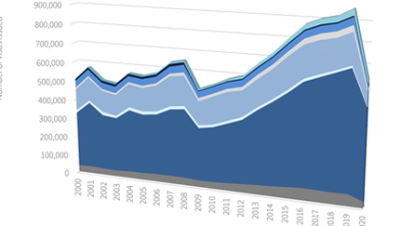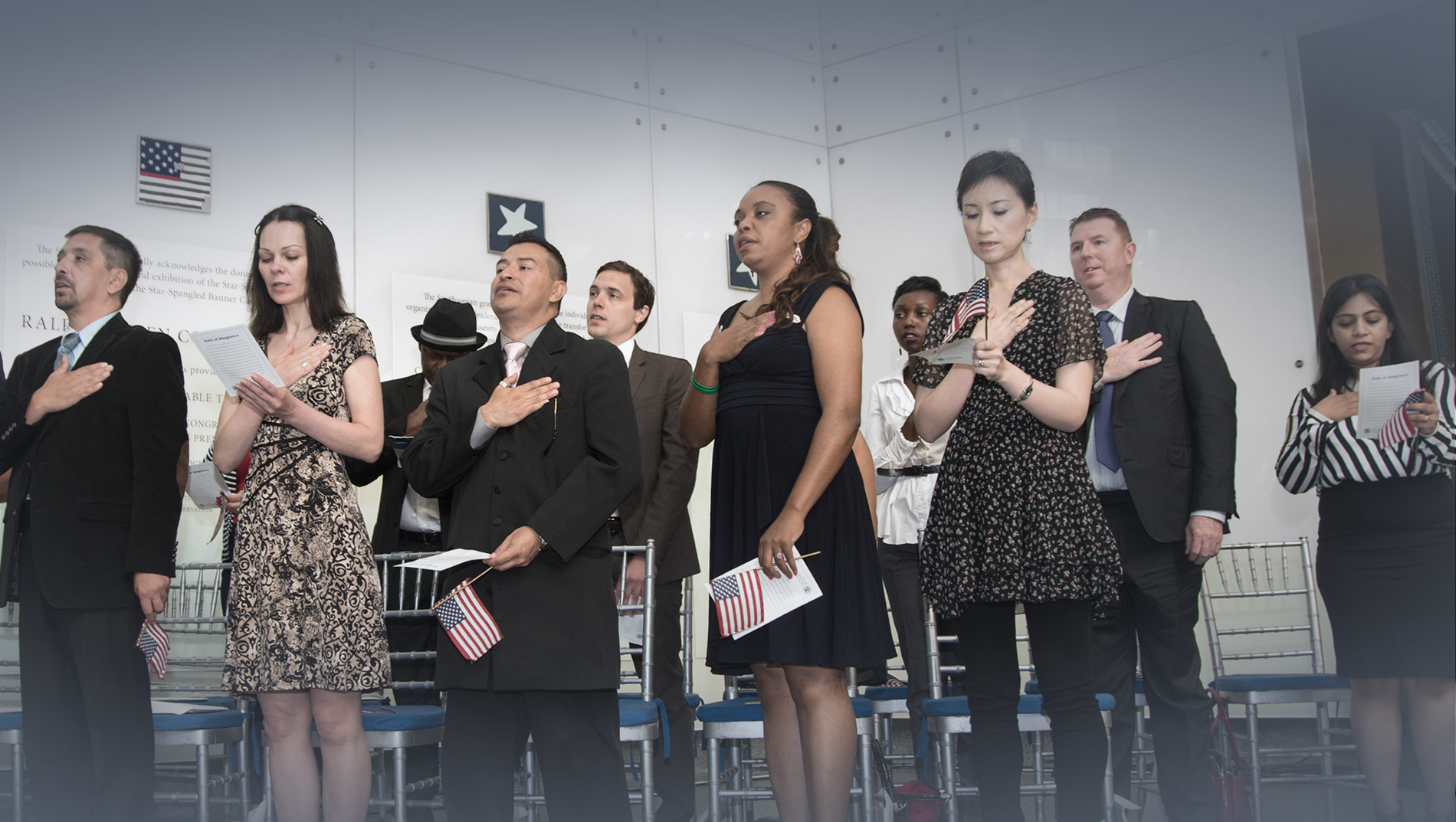How the Immigration System Works
The U.S. immigration system operates under an intricate set of rules that outline who can enter, reside in, and become a citizen of the United States. It includes various pathways like family-based immigration, employment visas, and refugee and asylum status, each with its own criteria and application processes. Several federal agencies, including the Department of Homeland Security and the State Department, oversee the system and enforce immigration laws and policies, handle applications, and manage border control. Learn more by exploring the resources below.
How the United States Immigration System Works
- How the Immigration System Works
- June 23, 2024
U.S. immigration law is very complex, and there is much confusion as to how it works. This fact sheet provides basic information…
Read More

How to Have Productive Conversations on Immigration
In preparation for the August recess, the Immigration Policy Center released a new guide to answering the tough questions on immigration. This is perhaps a misnomer, as the issues we cover—the intersection of crime, the economy, integration, and immigration—aren’t so much tough as they are complicated. There is plenty of evidence available on the significant contributions immigrants make to the country, so providing that is easy. What’s tough is discussing the personal myths and misconceptions individuals carry with them on the topic. Aren’t immigrants to blame for…? Read More

Crafting a Successful Legalization Program: Lessons From the Past
One of the themes that emerged from the Senate Judiciary Committee mark up of the 2013 Senate immigration bill was the necessity of avoiding the mistakes of the past. In the context of legalization for the 11 million unauthorized immigrants now in the United States, the argument is often made that the 1986 law wasn’t tough enough, and any new legalization program should have more requirements and restrictions. However, in my 39-year career with the Department of Homeland Security (DHS) and former Immigration and Naturalization Service (INS), and after years of studying implementation of the 1986 law, I’ve reached a different conclusion. A successful legalization program depends on simplicity and common sense. There are many lessons to be learned from the 1986 law about how to design a better legalization program. Fortunately, many of those lessons have been absorbed by the drafters of S. 744, the Border Security, Economic Opportunity and Immigration Modernization Act. Nonetheless, as the debate continues on this bill, it is important to reiterate the importance of good design and thoughtful implementation. That is what will ensure success and provide the country with a working immigration system. Read More

How Budget Cuts From Sequestration Will Affect The Nation’s Immigration System
The U.S.’s immigration system, already burdened by application processing backlogs and insufficient funding for immigration courts, could become even more unwieldy if the government must slash its budget on March 1. Sequestration – a package of across-the-board government spending cuts totaling $85 billion this year and $1.2 trillion over the next decade – likely will go into effect on Friday unless Congress and President Obama manage to reach a deal. Currently, there are no reports of ongoing negotiations to avert the automatic cuts, so when the cuts kick in, all aspects of the immigration system – from visas to deportations – would be impacted. Read More

Second Annual DHS Progress Report
In its second year under the Obama Administration, the Department of Homeland Security (DHS)—which is responsible for the nation’s three immigration agencies (USCIS, CBP, and ICE)—continues to struggle with its competing missions of providing immigration benefits and enforcing immigration laws, all within the context of an outdated and broken immigration system. Over the past year, while waiting for Congress to act, the Administration has increased its emphasis on enforcement and deportation and denied its ability to provide administrative relief. This report finds that, while DHS has made significant progress in some areas, there is much room for improvement. The report recommends that DHS act in line with its own stated priorities and exert its executive authority to bring about much-needed reforms that can be done in the absence of Congressional action. Read More

The Diversity Immigrant Visa Program: An Overview
This fact sheet provides an overview of the diversity visa program, the requirements and security checks currently in place, and demographic information about recipients. Read More

Immigration Detainers: An Overview
This fact sheet explains detainers, how they are used by federal and local enforcement, and the impact they have on immigrants. Read More

Breaking Down the Problems: What’s Wrong with our Immigration System
While some characterize our immigration crisis as solely an issue of the 11 to 12 million unauthorized immigrants living in this country, our problems extend beyond the number of undocumented people to a broader range of issues. The lack of a comprehensive federal solution has created a slew of lopsided, enforcement-only initiatives that have cost the country billions of dollars while failing to end unauthorized immigration. The first step, however, in devising solutions to our problems is understanding the scope of them. IPC’s latest report addresses several key areas, including how our current immigration system functions, the structural failure of our system, issues stemming from an inadequate federal response and long-delayed immigration reform. Read More

Essential to the Fight: Immigrants in the Military Eight Years After 9/11
From the Revolutionary War to the current conflicts in Afghanistan and Iraq, immigrants have made significant contributions to the United States by serving in our military forces. Today, immigrants voluntarily serve in all branches of the U.S. military and are a vital asset to the Department of Defense. To recognize their unique contribution, immigrants serving honorably in the military who are not yet U.S. citizens are granted significant advantages in the naturalization process. Over the past eight years, Congress has amended military-related enlistment and naturalization rules to allow expanded benefits for immigrants and their families and encourage recruitment of immigrants into the U.S. Armed Forces. Without the contributions of immigrants, the military could not meet its recruiting goals and could not fill its need for foreign-language translators, interpreters, and cultural experts. This latest Special Report reflects on the vital role immigrants have and continue to play in keeping our nation safe. Read More

Breaking Down the Problems: What’s Wrong with Our Current Immigration System?
While some characterize our immigration crisis as solely an issue of the 11 to 12 million unauthorized immigrants living in this country, our problems extend beyond the number of undocumented people to a broader range of issues. Read More

Employment-Based Visa Categories in the United States
Current U.S. immigration law provides several paths for foreign workers to enter the United States for employment purposes on a temporary or permanent basis. This fact sheet provides basic information about how the employment-based U.S. immigration system works. Read More
Make a contribution
Make a direct impact on the lives of immigrants.

